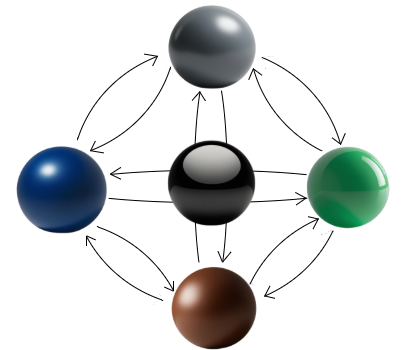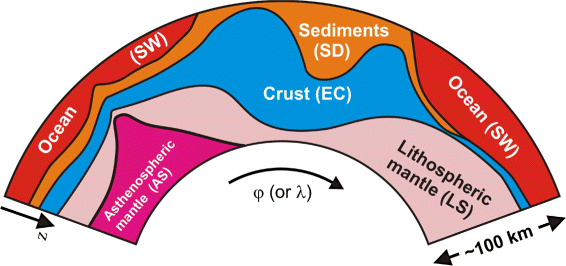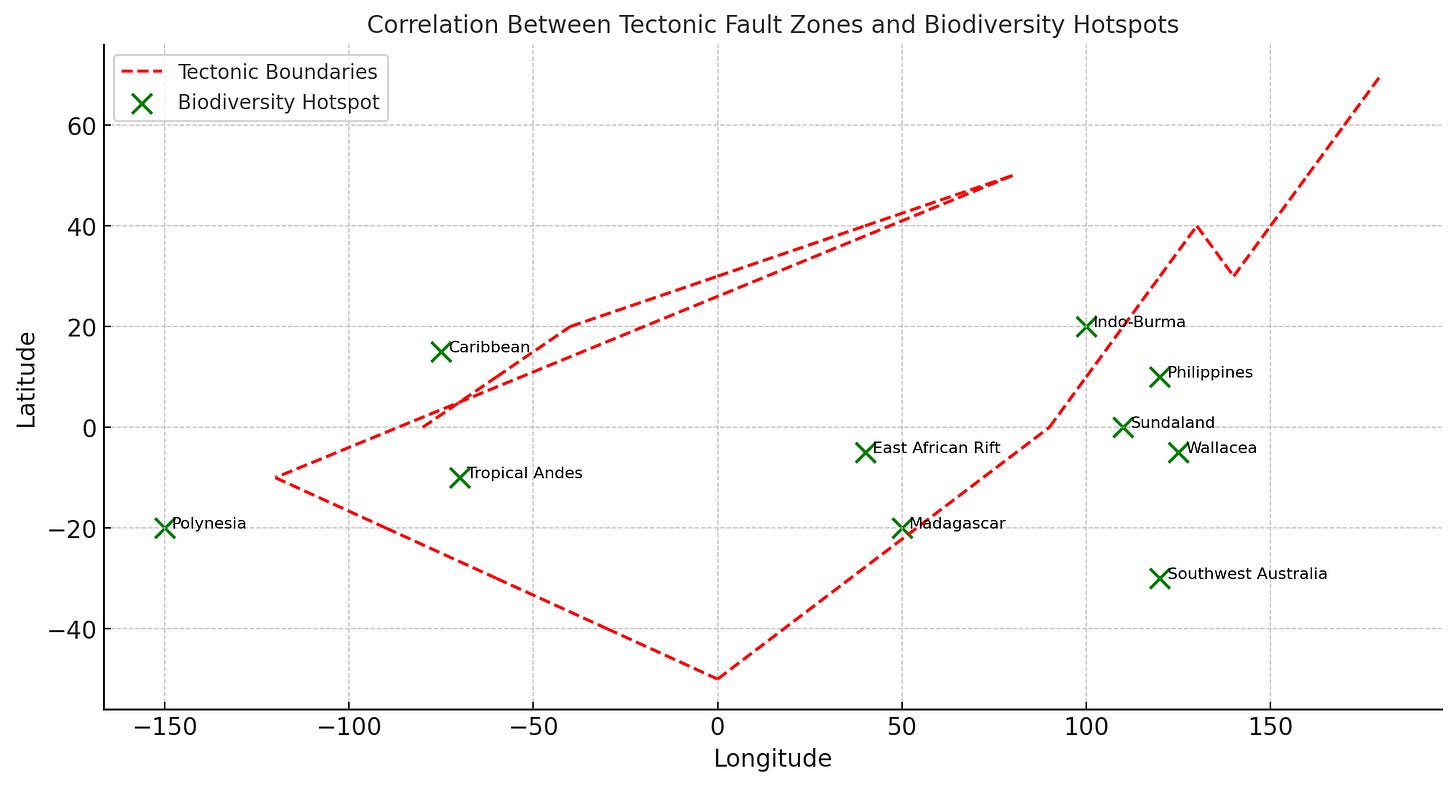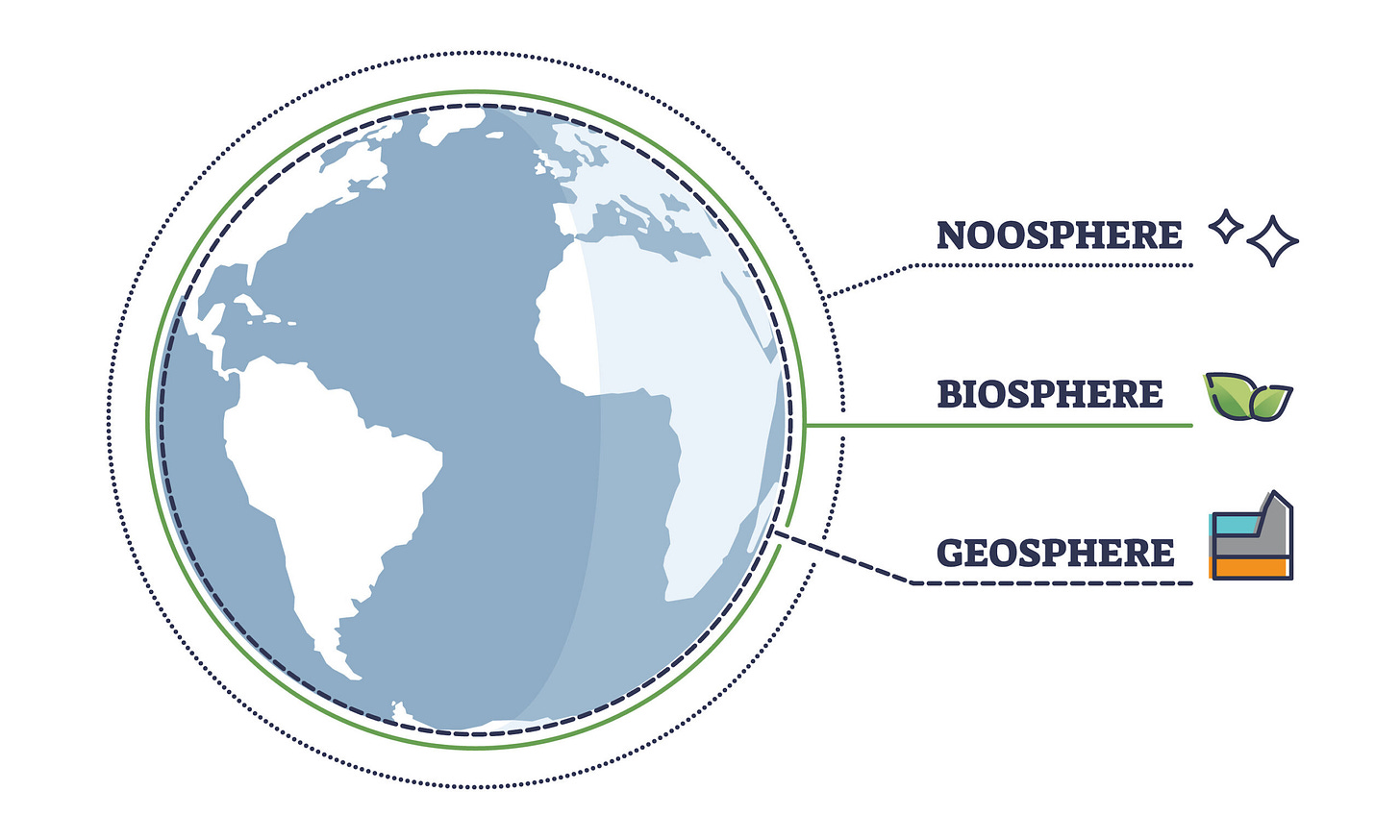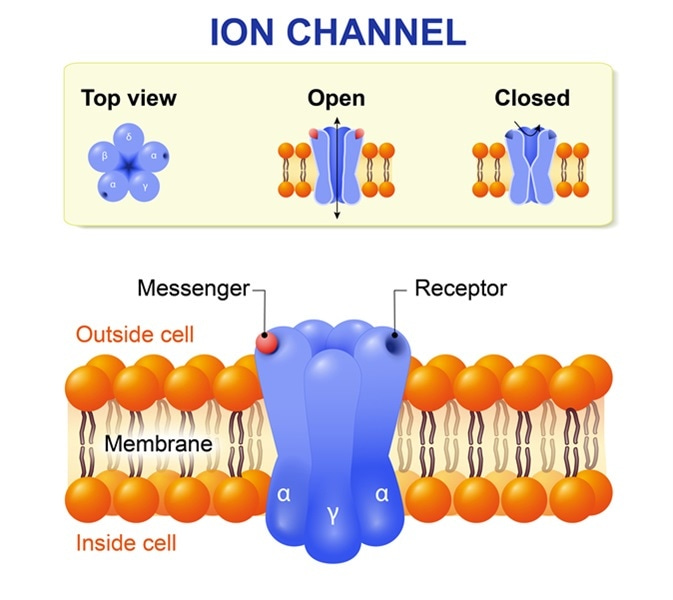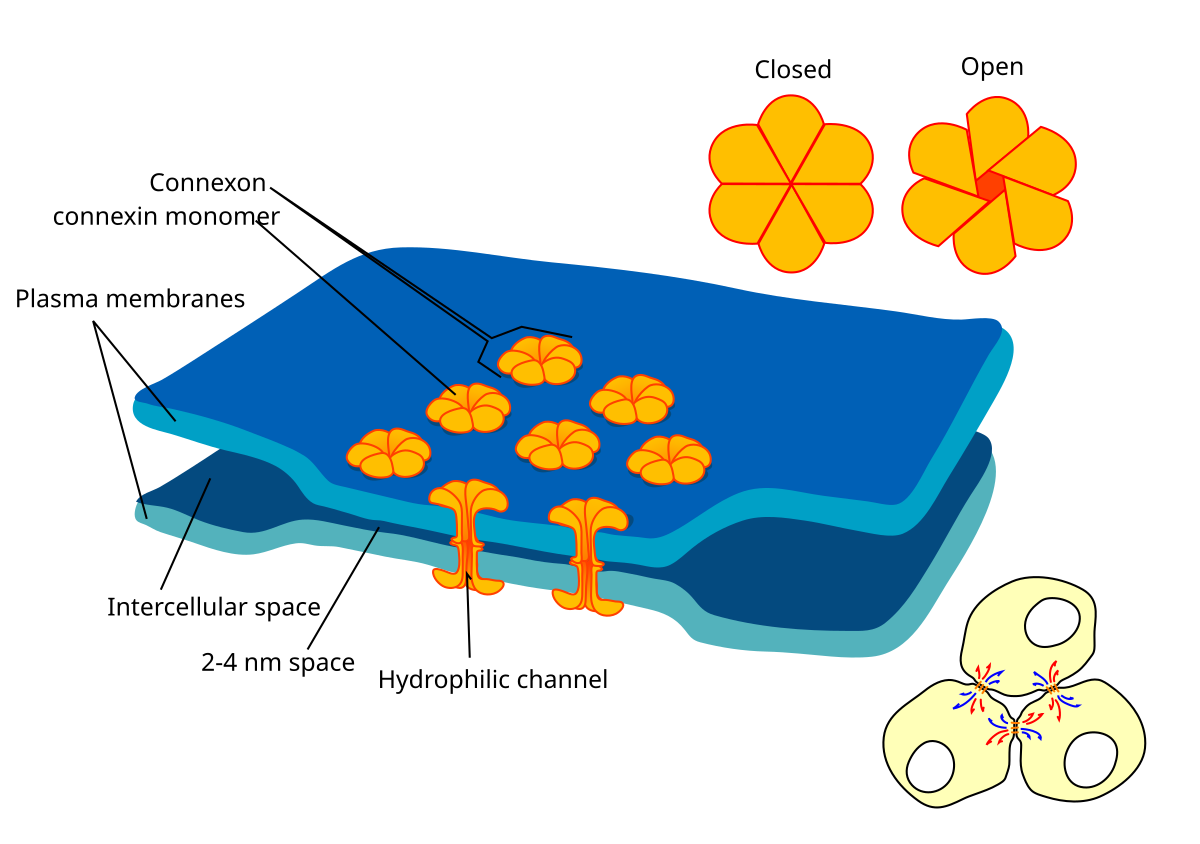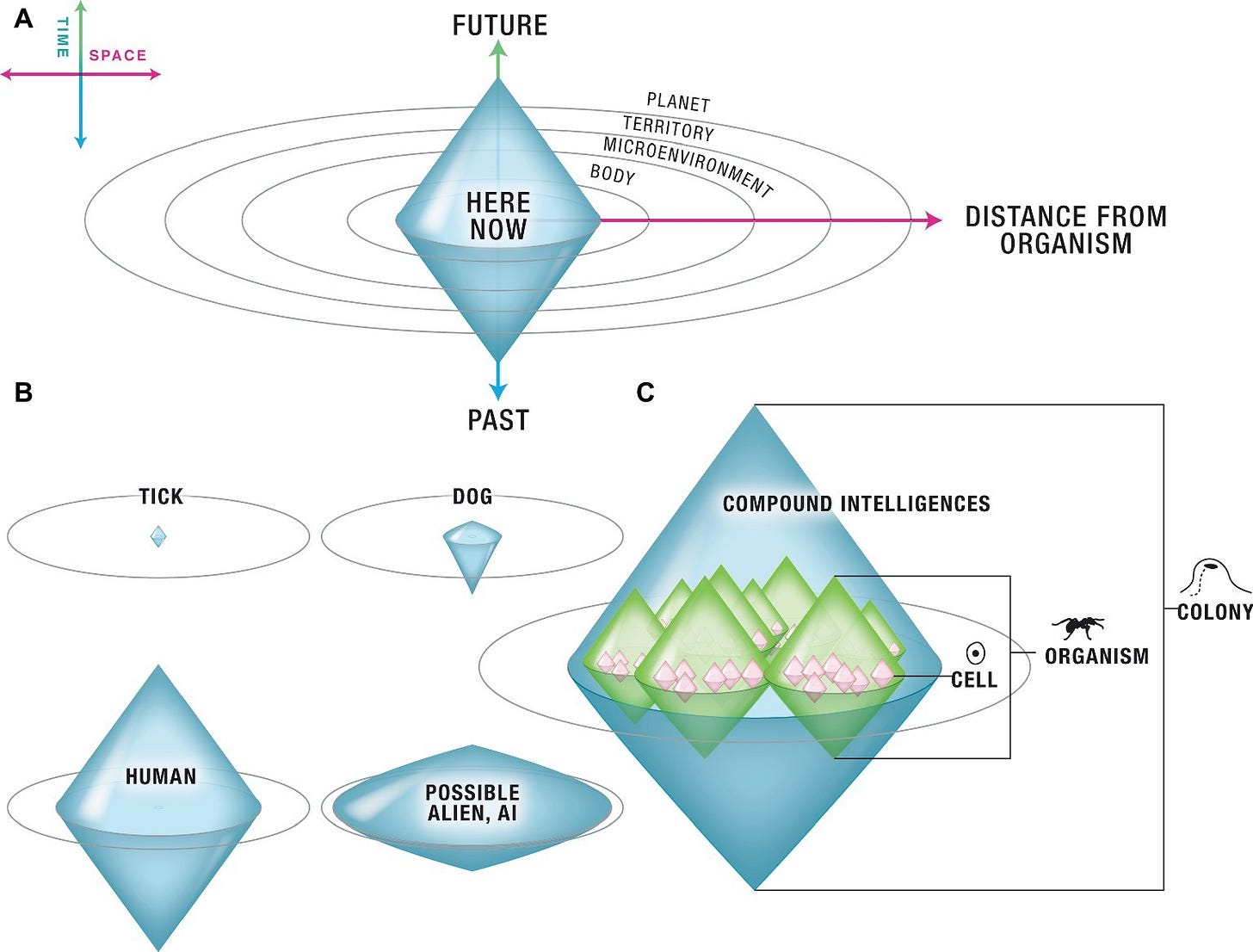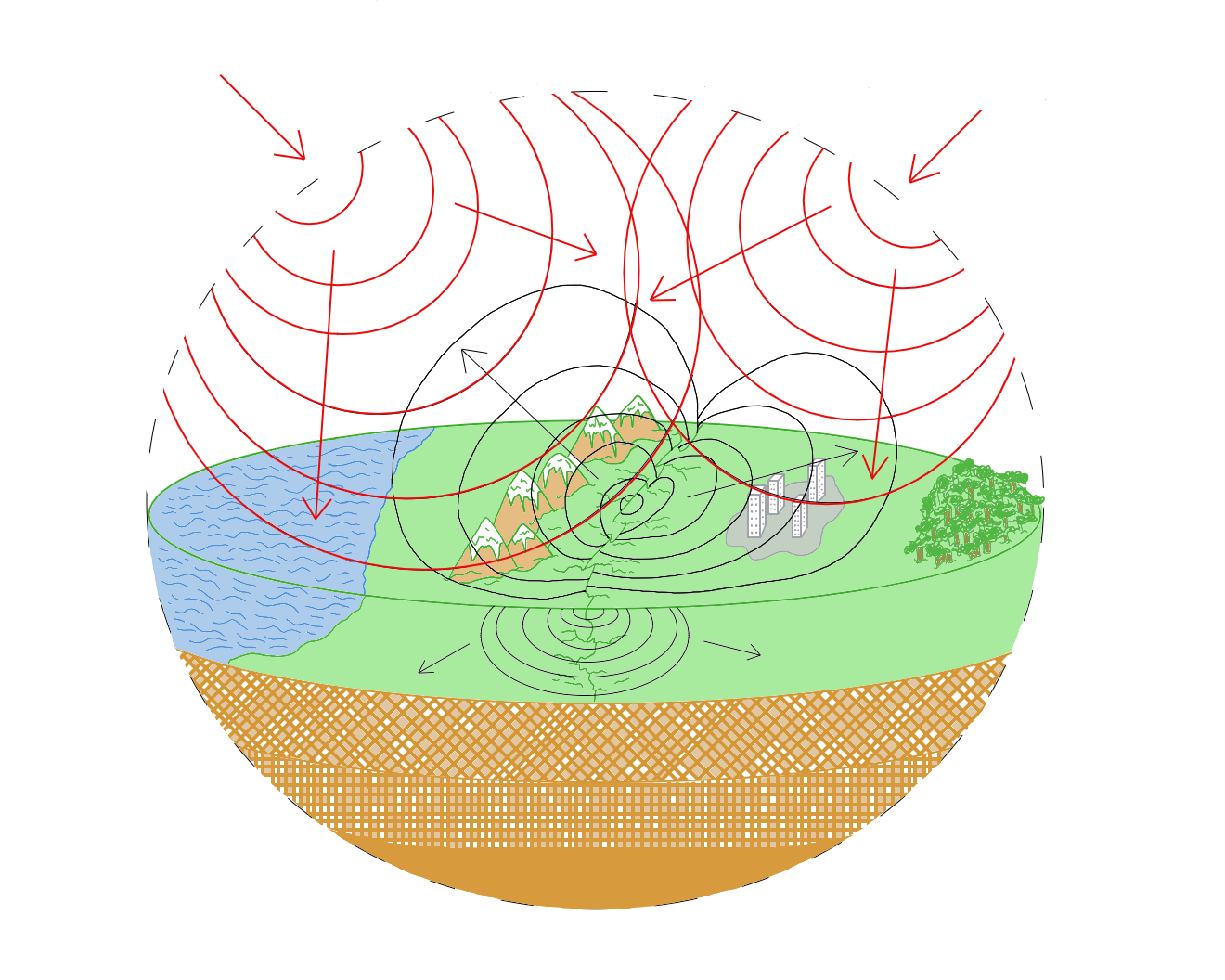How have fault zones and interrelated electromagnetic systems influenced bioelectric systems?
Shaping Faults | Part 3.2
“It is not the strongest of the species that survives,
not the most intelligent that survives.
It is the one that is the most adaptable to change.”
― Charles Darwin
Highly Charged
Earth shakes, crustal stresses crack open and, at that exact moment, information has been shared. But before we get to all that, let’s quickly rewind to our underlying proposition:
Earth’s innate electromagnetic (EM) energy and thus, by proxy, our fault zones too, have helped shape the development of Life.1
Indeed, because of the theoretical study of Life on other planets, exobiologists are one group whose research continues to suggest that the stories of Life and EM energy are deeply intertwined. To understand how this occurs on our planet specifically, let us return to a framework introduced in a Part 2, the Four Spheres Model (FSM):
the atmosphere (grey)
the biosphere (green)
the geosphere (brown)
the hydrosphere (blue)
Given everything we have learned so far about the role of the geomagnetic field (GMF) in Earth’s EM landscape—itself a result of our geodynamo2—and given that the corresponding set of nested complex systems may have a direct causal relation to conditions along conductive fault zones, let’s now add another planetary-bound sphere of systems to cap the FSM off:
the geomagnetosphere3 (black)
With the “F” in “FSM” now standing for “five”, the overlapping and interconnected components of these systems within systems may be heuristically imagined as:
When thinking about the Earth’s natural EM energy systems, it can be helpful to frame them within the relevant sphere, and then see how that overlaps with others in the overall FSM framework. It can thus be advantageous to add a “fifth sphere” as, with this addition of the geomagnetosphere to the base four the majority of Earth’s planetary dynamics are almost fully encapsulated. The causal relation between external solar forces and internal planetary spheres is a great example of the interconnected nature of these five multi-faceted, complex systems. Such a relation also serves to highlight the role of EM energy as a sort of through-line for maintaining such planetary-wide systemic FSM connection.
For example, solar forces interact with the permeable, outer-layered magnetosphere, where some of the EM energy finds itself pooling in one of the two Van Allen Radiation Belts, whilst some more EM energy continues inwards, following the lines of force produced by our GMF (largely attracted to the poles where the GMF connects closest to the magnetosphere which projects out into space). During this process, charged particles pass through the ionosphere (a highly conductive region of the atmosphere which contains a high concentration of free electrons and ions) and in doing so couples the magnetosphere above to the conductive pathways provided by our crust, mantle (geosphere) and total body of water (hydrosphere) below, via telluric currents, caused by the process of large-scale electromagnetic induction. Just so happens our geosphere (and by connection, our hydrosphere) is more conductive along the fault zones which branch out across our planetary surface.
Following on from this example, the process of EM induction suggests EM energy is transmitted into Earth, facilitated and mediated by the various interconnected planetary systems. One line of reasoning might then go:
If geomagnetic induction produces strong telluric currents in the geosphere and hydrosphere, could it also induce secondary electric field effects in biological systems within the biosphere?4
Maintaining this current line of enquiry, and in-keeping with the original proposition, it is of interest to note that atmospheric electricity, largely originating from processes like geomagnetic induction, “can influence the electrochemical environments of soils, water bodies and their sediments, with implications that are likely relevant for a wide range of organisms and ecosystem processes.”5 It stands to reason that such EM-related processes especially influence conductive environments (e.g. near water or high-salinity regions), and have influenced the function of primitive organisms as well as organisms who still inhabit these spaces today, biological systems which feature specialised electroreceptive mechanisms (e.g. sharks, eels, and some amphibians).
Now we can clearly see intricate yet prevalent mechanisms allowing EM energy to moves between the various planetary systems into other, smaller systems, like the soil chemistry, flora and other, larger organisms within the terrestrial and aquatic spaces of the biosphere.
Considering Life - which in one reductionist sense can be considered a biological system with certain electrochemical components - sits precariously in the biospheric space between the atmosphere and the geosphere—two systems intricately connected to the higher-order planetary systems—we may ask ourselves the following question:
If Life inhabits a space liminal to other interconnected planetary systems through which EM energy flows, what is the potential relationship between EM energy and Life?
Well, now knowing parts of the geosphere and the hydrosphere are, after all, known for being highly conductive components of the overall planetary system, we looked at how EM energy, especially relating to the GMF, has shaped Life. But I am interested in the connection and the value of such a connection at a deeper level. To continue evaluating this question, let us first start by familiarising ourselves with how geospheric features and their related EM connections have provided Life with one key element: information.
“A schematic view of subsurface structure in depth range 0–100 km” from Alkeseev et al, 2015.
The geospheric layer runs around our planet and is composed of all the sections not marked “Ocean”.
Information Networks
Above-ground features, like mountains and valleys, plains and plateaus, clearly provided structural information to the early lifeforms living on and around them. Their literal topography is one such packet of information. Just have a look at the role of literal “place” cells!
In a physicalist sense, topographical geospheric features have helped shape the development of Life from its earliest stages: learning to navigate terrain would influence (amongst other things): a) organism-wide structural systemic integration,6 b) mechanisms by which proto-cognition can be developed7 and c) localised adaptations to environmental contexts.8 However, these developments emerged through complex, multi-faceted evolutionary processes where terrain was one of many influential factors.
As it turns out, EM systems like the GMF also provided early Life with a form of structural information.9 Still somewhat physical (just stopping short of an ability to see or touch), such informational packets provided Life with electromagnetic boundaries and borders, as well as requiring an adapted sensory ability to interpret such EM energy and maximise it for survival. In the previous Part 3.1 I showed the following visual:
GMF’s appearing like contours across a map of the Earth. Are these representative of lines of force as a way of imagining how information is transferred from EM energy sources to biological systems?
(CC PD)
If we ran with the loose hypothesis that Life has used the information present in the causal relations of our FSM planetary systems to organise itself and in doing so eventually flourished into the maelstrom of diversity we see in both the fossil records and contemporary analysis, then one thing we could look for to test this notion is evidence that Life exists in abundance along spaces known to be associated with either:
High rates of EM energy output
High rates of subsurface, surface, and aboveground conductivity.
Well in Part 1.2 I made clear the strong correlation between highly conductive subduction fault zones and biodiversity hotspots. Quantitatively, the chart below suggests the chances of this happening randomly are about: 2.4%. Such a low probability suggests this correlation may not be purely by chance.
Traditionally it makes sense. Take volcanoes, which are found along both convergent and divergent fault zones: they feature a chemical composition which makes the surrounding soil highly fertile. This correlates to 80% of the selected fault-based biodiversity hotspots being found in or around regions of high volcanism; volcanoes are found along fault zones. Volcanism, when it isn’t paradoxically destroying the surrounding space, aids in creating pockets of fertility.
Whatsmore, the behaviours and topography of convergent boundaries favour processes like orogenesis (e.g. the formation of the Andes and Himalayas). Mountain ranges create varied climates in small geographic spaces. Such processes contribute to high speciation, thus accounting for the dense biodiverse pockets around mountainous fault zone regions.
In many ways Earth’s topography has rolled life into its folds, like mould coalesces in the nooks and crannies of a dark, dank room. Only these folds happen to also correlate to seismic activity, areas of abnormally high conductivity, and spaces in which EM energy flows more frequently than the norm. It is as if that fungal cultivation was not only attracted by the topographical space and favourable conditions for reproduction, but it also found itself settling into a space with the potential to be highly charged with EM energy.
Could these spaces of heightened EM energy potentials have been selected-for due to the information such energy provided to early living systems?
Causal Information Structure
Organisms have been interacting with the GMF, and perhaps other informational networks functioning from comparable yet adjacent mechanisms since, well, the origin of Life on Earth.
From all the evidence thus far I think one fair assumption could read: EM energy can be generated with enough force to reach us naturally (without intervention of technology), and if/when it reaches us it can contain the ability to affect us in some fundamental way.
Whilst this line of reasoning is based on a range of testable components10 it also contains one consequential assumption: there are key mechanisms, specifically within the human biological system, that accommodate such EM stimulus. So… are there?
Before we start zooming-in, let’s start by zooming-out, as any good enquiry should, to the philosophical space. Especially when that space is framed in ecology, anthropology and a trailing air of all important mysticism. When I heard about the informational processing role the GMF has had on life, immediately another concept I have spoken and written about before shouted down to me from the heavens.
Back in the mid-twentieth century French philosopher Pierre Teilhard de Chardin proposed an “added planetary layer, an envelope of thinking substance… given the name of the Noösphere. (From noos, mind: the terrestrial sphere of thinking substance.)” Like the “tenth planet”, we are just stopping short of adding a “sixth sphere” to our current five-part FSM. Yet, in-keeping with the spherical spirit, I like to imagine this interwoven web of communication and information like one of those rubber band balls everyone used to try and make back in school. You know, like this one. Only, taking the place of strands of rubber, the Noösphere is held together under the binding force of three interconnected components:
culture (hereditary)
machine (mechanical)
research (cerebral)
Diagram of Chardin’s Noösphere from the Centre for Christogenesis
Combined, these elements form a sort of energetic-information network. Even seventy years ago, Chardin11 thought of the mechanical components of this “thinking substance” as “the extraordinary network of electromagnetic energy from radio and television communications” that “already link us all in a sort of “etherized” universal consciousness.” Whilst this structural component of the Noösphere is based on artificially produced EM energy (e.g. radio waves), given the implication that the “Noösphere, in short, is a stupendous thinking machine”, the concept becomes an interesting framework from which to think about how a natural EM system such as the GMF could operate as an informational network for other living systems.
Nodes and links can be added to the Noöspheric network structure in a few different ways: with our own artificial EM output, via material nodes (e.g. 5G towers) and material links (e.g. 5G frequency bands), or via biological nodes (e.g. human biological systems), biological frequencies and reception mechanisms (e.g. when human biological systems interact with natural EM energy from the bottom-up and top-down).
If we subtract Chardin’s artificial “mechanical” component from the Noöspheric framework, then combine the remaining “mind-body-environment” components with the GMF’s ability to help evolve biological organisms by transferring information to them, well it stands to reason that there could be a more natural physiological component sitting adjacent to the mechanical one Chardin proposed for the Noösphere. Could the element needed to replace the machine in the equation be natural EM energy? Energy, lest we forget, that is coincidentally being produced and enhanced along fault zones.
Stuck within an informational Charlotte’s Web (be it the GMF, Noösphere or other EM/SEM forces) we may sit snug with the comfort that the web we dangle from has transcended the regular generational bounds of space and time. Think about it: the GMF has existed in some form or another for around 3.5 billion years,12 and so has remained a constant variable in the evolution of biological life on Earth. In this sense, adding another philosophical twist, we could consider the GMF13, (perhaps like the Noösphere?14) a hyper-object under Timothy Morton’s existing framework.
Using the “Lindy Effect” we can probabilistically assume with some high degree of certainty that the GMF will, in some capacity or another, continue existing for most, if not all, of Earth’s life-span. Transcendence like this derives from the notion that this is a “non-local” network structure. Certainly local manifestations of the GMF occur (e.g. the South Atlantic Anomaly). Information that passes across such a network just so happens to have provided complex systems like Life the ability to adapt and develop over time and space, almost, dare I say, guiding the actions of life through the duality of structure (both a resource for action and constraint) in a sort of ethereal, omnipresent manner. Almost as if life received directions from a prosaic 5G tower.
Basal Cognition
Way back in 1977, Canadian professor Michael Persinger stuck his neck on the line and suggested that seismic and solar related “effects would not stop at gross distortions in bioelectrical systems; more subtle modifications in "thought" and perception could exist.”15
While he has copped a lot of flak for his opinions, as modern natural sciences continues to plough onwards it becomes evident that the professor might, in fact, have been onto something. Persinger was looking for mechanisms running between naturally induced EM energy and changes in cognitive states, theorising “there are likely to be multiple cellular, biomolecular, and membrane mechanisms by which increased geomagnetic activity and atmospheric power directly affect brain function.”16 In other words: research was being carried out into whether EM energy can change brain function and thus alter perceptions of reality. And so we have arrived back to that fundamental assumption underpinning our earlier hypothesis:
There are mechanisms within the human biological system that enable EM energy to directly affect its functioning.
But there may have been a fundamental flaw in Persinger’s observational framework, just not the one we might expect. It starts with the idea that changes in cognition occurred at the scale of the “individual” experiencer or brain. Well, fast-forward almost 50 years and cutting-edge science is now suggesting cognition does not just exist at the scale of the individual person;17 it might be here where past lines of enquiry into the possible effects of EM on cognition may have gone astray: one way to think about this is not within the framework of “individual (human) cognition” but instead, reworked under the framework of “scale-free cognition” or, what is more formally known as basal cognition, the effects of EM energy must be considered across all levels of cognition.
Michael Levin, an esteemed developmental and synthetic biologist working out of Tufts University, has been studying the ins and outs of bioelectricity for quite some time. Unravelling the complex layers of “multi-scaled competency architecture” Levin’s team has conducted some truly groundbreaking experiments,18 including limb regeneration and morphogenetic mapping.
Straight from the lab, one such revelation is that the bioelectrical circuitry between cells may hold the key to cellular-level cognition. Now seen to be on the same par as synapses in the brain, activity at the scale of the cellular membrane may be one of “the ancestral basis for psychology” - aka human cognition, signifying that cognition may not derive itself 100% from the neuronal cells in the brain but instead from all over the everyday, traditionally “primitive” cells throughout the rest of the body.19 It appears there are many potential systems within our bodies for EM energy to affect.
We all know the network of the brain works by passing electrical signals neuron-neuron. Levin’s research has shown there are two key cellular features that play a massive role in this scale-free cognition:
Ion channels
Gap junctions
Cellular collective intelligence is driven by features like ion-channel activity in cells, where “bioelectric states can propagate between cells via electrochemical synapses known as gap junctions.”20 Volted-gated ion channels—nanoscopic 3-in-1 protein machines21—exist within the membrane of our cells and consist of a voltmeter, an opening and a “gate”.
“Types of Ion Channels in the Body” by Ratan-NM & Pharm on News-Medical.
These channels open or close in response to changes in the electrical potential across the cell membrane, allowing ions such as sodium (Na⁺), potassium (K⁺), calcium (Ca²⁺), or chloride (Cl⁻) to move across the membrane. Unlike volted-gated ion channels which operates within the individual cellular membrane, other protein-based cellular features called gap junctions act like a “bridge”, connecting the cytoplasm of one cell to the cytoplasm of another, filling the gap between cell membranes in the structure of our bodily cellular networks.22
A labelled diagram of a gap junction between two cell membranes by Mariana Ruiz (LadyofHats) on Wikipedia (public domain).
Gap junctions are voltage-sensitive, and allow information to pass cell-cell.23 For example, electrical signals generated by voltage-gated ion channels can spread through gap junctions to ensure synchronous contraction of a cell group. Between both of these ingenious structures of cellular architecture, information is able to be passed across vast cellular networks throughout the body, shipping it far and wide across the cellular landscape.24
In essence, “biological electric circuits and ion channels/ GJs [gap junctions] enable the jump from chemistry to embodied meaning”.25 They provide a mechanism for electrochemical processes to take place in living systems, including us humans. Whatsmore, being both goal directed and taking independent action, these cells are seen as cognitive agents in their own right. Considering this cellular cognition is “glued” together by bioelectricity, these cognitive agents—our cells—can be considered highly sensitive to changes in, and additions of, EM energy. As it turns out, our earlier philosophical assumption may be based in actual frontier science.
Scale-free cognition thus refers to the idea that cognition and decision-making processes happen along a spectrum. Levin created a brilliant model to capture this new classification of the boundary of self, named the “Cognitive Light Cone”:26
“The Cognitive Light Cone” in “The Computational Boundary of a "Self": Developmental Bioelectricity Drives Multicellularity and Scale-Free Cognition” by Levin, 2019 (accessed on PubMed).
The Cognitive Light Cone highlights the continuum of cognition across multiple levels of biological organisation: from individual cells to countless cellular networks, to individual and swarms of organisms, all the way up to large and complex groups. As this cutting-edge work seems to suggest, bioelectric circuitry within our body - not just our heads - is fundamental to our very existence, including our evolution and perhaps the current conscious experience. And here is where I think previous research into the effects of EM energy on cognition went wrong:
Instead of looking for changes in cognition simply at the scale of the individual, changes should be sought out across the cognitive continuum, including “down” at the cellular and “up” at the group level.
Think back to what we have already seen with the way in which the GMF has shaped early Life, including simple multicellular organisms like bacteria. Using the scale-free cognitive framework to assess the impact of EM forces across the various levels of the Cognitive Light Cone, we can almost imagine the EM lines of force bouncing off the outer shell, slowly morphing the boundary of self as the intensity of its fields change over millions of years.
Could fault lines and associated solar and EM processes within the combined planetary system have, perhaps quite literally, shaped our reality across all levels of cognition?
Bioelectric Framework
To understand if this leap is possible, we return to our buddies at the World Health Organisation (WHO - no, not those guys). Pushing politics aside, a 1993 WHO agenda27 noted how the effects of EM forces on the human body “also includes the contribution from ionic conductivity (movement of ions)” which “varies with frequency.”28 Now say what you want about the WHO, the $20 million29 spent on this project suggests there was a there there worthy of investigation.
No doubt “there are good reasons why ELF guidelines on exposure to magnetic fields should be based on restrictions that avoid effects on cognitive function”.30 Quite undeniable, in fact, that in 2022 studies have shown that EM frequencies as low as the 50 and 60 Hz range can induce “rapid increases in calcium signaling, produced by increases in intracellular calcium [Ca2+]i levels.” It also just so happens calcium transportation along the voltage-gated ion-channels is integral to the realm of biocomputing, thus also integral to Levin’s scale-free cognition framework vis-a-vis cellular cognition.31
Pushing our little boat even further downstream, exposure to EM energy through ELF fields can modulate the opening and closing of calcium ion channels, which are crucial for maintaining the resting electric potential (Vmem) across cellular membranes. When exposed to ELF fields, these channels undergo changes in their conformational state, causing shifts in the flow of ions like calcium and sodium. Ion channels thus serve as a bioelectric gate-keeper, allowing both simple and complex organisms to process information and coordinate behaviours.
These proteins do this by controlling the movement of ions like calcium, potassium, and sodium that can pass along the cell membrane. It has long been understood that “currents induced by electromagnetic fields produce electrochemical alterations in components of the cell membrane surface… hypothesized to cause signals across the cell membrane and produce intracellular alterations”.32 By increasing or decreasing specific ions (e.g. potassium and chloride cations) through manipulation of the respective ion channels, Levin and his team were able to engineer miraculous outcomes, including the potential regeneration of limbs,33 and the resulting change in Vmem caused by ELF fields could potentially hint to fundamental changes in basal cognition also.
Surprise surprise, gap junctions—those tiny nanotubes we saw earlier, which enable intracellular information sharing by allowing ions to move from cell-to-cell, consequently mediating bioelectric communication between cells—are also influenced by ELF fields. ELF exposure can modify how cells share electrical signals, changing the conductance in gap junctions, further impacting the overall electrical resting potential across tissues.
Put more succinctly: “ion channels and neurotransmitter molecules are ubiquitous across the tree of life. Bioelectric integration helped evolve control strategies and cognitive content across the continuum from chemical networks to human minds – it illustrates an important mechanism of early evolution.”34
External EMFs could influence the lower-end cognitive boundary of biological systems by modulating their bioelectrical networks. The low-frequency electromagnetic field (EMF) range—where ion channels and gap junctions are most subtly affected—presents a through-line to the idea that natural EM energy, more likely to affect areas of seismic density, can affect not only the fundamental structural aspects of our living systems but also fundamental aspects of our cognitive development also.
Returning, then, to our previous FSM example of: solar wind (input EM energy) → magnetosphere (EM field interaction) → ionosphere (EM currents) → earth (geomagnetic induction) → telluric currents flow through conductive geosphere & hydrosphere (energy dissipation & redistribution), then it is clear that, at the point where geomagnetic induction occurs, if a biological system is present, and the offspring of that organism remain in the same potentially conductive area for thousands, if not millions of years, then the bioelectric mechanisms in-built into the cellular architecture may become reconstructed by this EM interference over time.
Ion channels and gap junctions, via bioelectric processes, act as the mediators of electrical signals that can influence biological outcomes, from pattern formation and morphogenesis to cognitive function. Both Levin’s cutting-edge science and the WHO’s multi-million dollar agenda emphasise the central role of ion channels in biological systems, and the potential changes these can endure in the face of certain EM energy.
Whatever the case, animals use the effects of EM energy distributed across the Five Spheres to navigate the biosphere. Perhaps Life has used EM energy to navigate morphospace.35 Be it morphological change, bio/electrochemical change, or change in cognition across multiple levels, “...the electrical information needs to be scaled considerably, and nervous systems are an ideal extension of ancient, pre-neural bioelectric signaling paths to enable further scaling of the cognitive boundary of cells into organs, organisms, swarms, and societies.”36
But a burning question remains: Can EM energy from geomagnetic and seismic forces have shaped the behaviour and function of cognition across cells and organisms in unexpected ways throughout the formation of the evolutionary tree?
Seismic & Cosmic Faults
Over hundreds of thousands of years, geomagnetic disturbances, triggered by solar storms, and EM surges from seismic activity, have rippled through our planet’s surface, creating both top-down and bottom-up systems of EM energy. Within those hundreds of thousands of years, something else special also occurred: human evolution.
Whilst it has been known for quite some time that “the GMF at the Earth's surface shows a broad range of magnitudes, ranging from less than 30 microteslas (µT) to almost 70 µT”37 in some areas, data now suggests that energy of a similar magnitude (1µT - 100 µT) can produce effects on biological systems like changes to the reproductive system, or eliciting both therapeutic and damaging outcomes on various physiological components and biochemical processes.
Geomagnetic storms increase the intensity of the natural EM environment, generating pulsed ELF fields that interact with biological systems. Seismic-related EM emissions would spike during periods of tectonic activity, generating short but intense pulses from mechanisms like piezoelectric and triboelectricity. From the systems within systems presented in the FSM it should now be clear that organisms, including humans, have been subjected to EM energy prior to the advent of any artificial EM sources. Naturally produced ELF waves, for example, often in the range of 0.1 to 30 Hz, not only coincide with natural brainwave frequencies, particularly the alpha (8-12 Hz), theta (4-8 Hz), and delta (0.5-4 Hz) bands, but further overlap with the ELF frequency shown to initiate certain changes in cellular cognition.
Nanoscopic mechanisms within living organisms appear perfectly set up to receive these EM signals and affect change in their own bioelectric signals on their behalf. Human brains, specifically the pineal gland, feature crystalline structures which also exhibit piezoelectric effects. These tiny conductive crystals are thought to allow the pineal gland to respond to EMFs using a transducer-like mechanism.38
Just like our geosphere, which produces piezoelectricity along fault zones, so too does the part of the brain that the French philosopher and scientist Renee Descarte called the Seat of the Soul… Smack bang in the middle of our brains, the pineal gland has long since been held in mythical regard. Now, through an EM lens, perhaps this mythos is justified.
Long-term exposure to geomagnetic and seismic ELF fields, over hundreds of thousands of years, particularly in conductive environments where tectonic activity is frequent, could have gradually altered the bioelectric communication networks within the human body. This cumulative, low-level interference may have led to adaptive changes in the way cells process information, store “memories”, and respond to external stimuli.
As a result of these interactions, cells may have developed adaptive mechanisms to filter or integrate external ELF signals into their bioelectric processing, leading to the evolution of more resilient bioelectric networks that can process information more efficiently in a fluctuating EM environment, enhancing emerging phenomena like cognition and reception of EMF’s over evolutionary time scales.
To complete this long loop, we return next to our correlations from Part 1.2 in order to reexamine the correlations between fault zones and areas of cultural and technological significance, shared belief systems and regions where conflict systematically springs up, under our new lens of natural EM causation.
Life capitalised from here on to represent every biological system that has existed within Earth’s biosphere.
Underlying dynamics of the geodynamo include: Earth’s inner core provides heat and stabilizes the dynamo, while the outer core acts as the main generator of Earth's magnetic field through processes like convection and rotation. The lower mantle modulates convection in the outer core, and the upper mantle influences heat distribution and local magnetic anomalies. The crust contains remnant magnetism, modifying local fields, while the ionosphere hosts electric currents influenced by the GMF, and the magnetosphere extends and interacts with external space weather, shaping Earth's EM environment.
Differentiated from but including the magnetosphere (the space around Earth dominated by the GMF, which serves as a protective “bubble” from the sun and other sources of cosmic bombardment), and including the dynamics of the geodynamo and the resulting geomagnetic field (GMF).
Biosphere being the sum total of biological systems across our planet.
Dickinson et al., 2000, Science; Shubin et al., 2006, Nature; Wright et al., 2018, Evolution & Development; Bardua et al., 2019, Nature Ecology & Evolution.
O'Keefe & Nadel, 1978 (discovery of place cells); Wehner & Srinivasan, 2003, Journal of Comparative Physiology; Wolpert & Ghahramani, 2000, Nature Neuroscience; Grasso & Basil, 2016, Current Opinion in Neurobiology; Freund et al., 2017, PNAS.
Losos et al., 2000, Nature; Beall, 2007, Integrative and Comparative Biology; Nørgaard et al., 2012, Journal of Experimental Biology; Irissari et al., 2019, Science Advances; Guerrero-Ramírez et al., 2016, Nature Communications.
Structural in a few senses: 1) Allowing the organism to organise itself spatially, akin to morphospatial changes 2) Providing boundaries and critical mass points to early life 3) Structuring intra-cellular communication
To list a few of the big ones: how the GMF has guided the structural evolution of the spatial reasoning of biological systems (Life), how EM related mechanisms like the Schumann Resonance can directly affect the optimal function of biological systems (e.g. regulating the rhythm of the heart) and even help regulate the tropical equatorial zones.
The following quotes are all taken directly from Chardin’s previously linked work.
For the following reasons:
It's massively distributed across the entire planet and extends into space
It's temporally vast, having existed for billions of years
It's physically real but largely invisible to direct human perception
We can only detect or measure it partially through instruments
It affects countless biological and geological processes in ways that are difficult to fully map
It fluctuates and changes over multiple timescales (from seconds to millennia)
For the following reasons:
It encompasses the totality of human thought, knowledge, and mental activity
It exists across all human minds past and present
It has both material manifestations (in brains, books, digital storage) and immaterial aspects
It evolves in non-linear ways that no individual can fully predict or control
It's both local (in individual minds) and nonlocal (as collective thought)
Persinger et al, 2010, Pp. 946-947.
In the sense of a system expressing two key qualities: goal orientation and independent action.
One such example is the “Electric Face”, which maps bioelectric signals between cells to reveal a “bioelectric pre-pattern” - the shape and structure of a frog embryo's face - before it has even physically formed…
Found in most organisms, from bacteria to humans.
Gap junctions are “highly regulatable valves that allow cells to selectively share bioelectric state with neighbors and implement activity-dependent plasticity (memory)” that link single cells into vast networks. (Levin, 2019)
Cellular-level bioelectric circuitry even suggests a mechanism for information processing pre-brain!
A stunning diagram I must say (inspired, in part, by Minkowski’s famous “Space-Time” diagram)
Part of the broader International EMF Project
Equivalent to 50 million today.
See also: Grassi et al, 2004; Tekieh et al, 2016;
WHO P.91
Carried out by implanting a “false memory”—an electrical blueprint of a feature that had not existed before but, once certain bioelectric signals occur, suddenly comes into existence, brought on by bio-hacking the mechanisms of scale-free cognition. A false bioelectric memory is implanted into the morphospace of the cell, which then takes independent action to pass on this signal to the next cell and so on, recruiting more and more cells across the cellular network in order to work towards this newly instated goal. Nested cognition at the cellular level sparks and soon changes up the physiological chain are noticed, in this case: a new limb is grown. See: Levin et al, 2018
Morphospace is the space where morphogenesis takes place.


